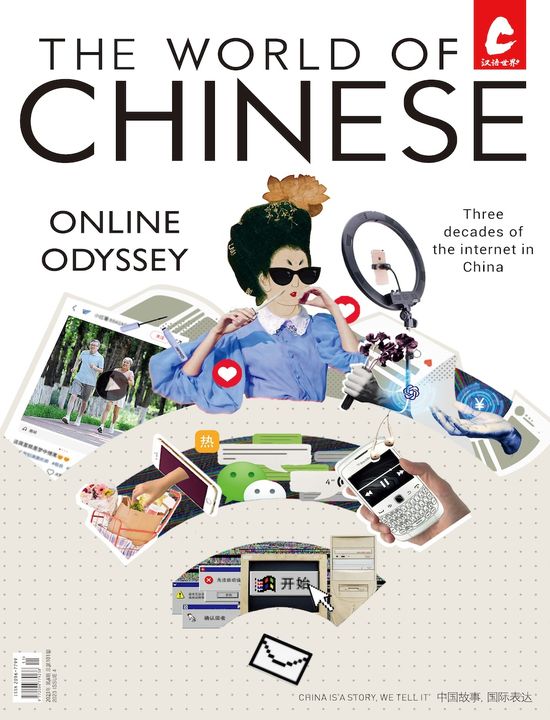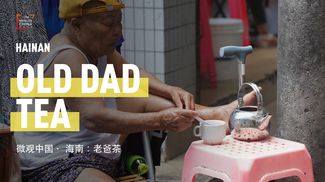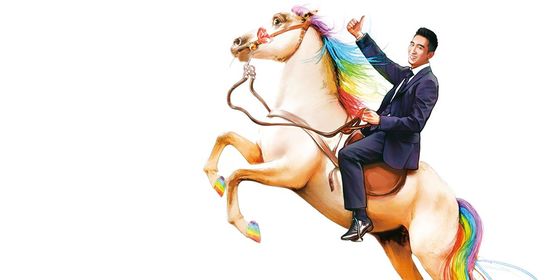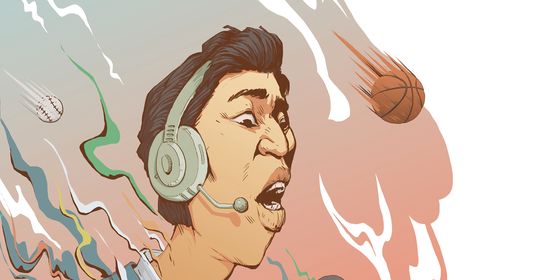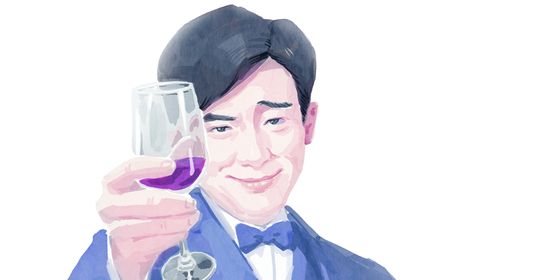How to talk about art like a critic
For today’s culturally conscious urban youth, hitting an exhibition on the weekend is almost a necessity. From Shanghai’s West Bund to the 798 Art District in Beijing, it has never been so easy to find an avant-garde installation to take a selfie with.
But what does it all mean? Open one of those exquisitely designed brochures, or read an art review website, and chances are, you’ll know the definition of every individual word, yet they form some incomprehensible puzzle when put together: The sentences are a mile long, and the phrases include “视觉表征” (shìjué biǎozhēng, visual representation) and “异质性叙事” (yìzhìxìng xùshì, heterogeneous narrative). Don’t bother looking to the title for help, especially when many works are simply called “Untitled.”
Art talk didn’t use to be this hard to understand. In traditional Chinese painting, an artist’s personal thoughts, sentiment, or philosophy was thought to be reflected in their depiction of the world, and was valued as much as the visual experience of their work.
An important concept was 意境 (yìjìng), usually translated as “artistic conception.” First coined by renowned Tang dynasty (618 – 907) poet Wang Changling, it describes the intense aesthetic harmony of imagery and meaning. To say that a painting or a poem 有意境 (yǒu yìjìng, has artistic conception) is to say it has a “soul.” A common cliché is to throw in an additional quote from Tang painter Zhang Zao, who epitomized traditional Chinese painting:
A: This painting of mountains and water has a special artistic conception.
Zhè fú shānshuǐhuà hěn yǒu yìjìng.
这幅山水画很有意境。
B: Indeed, it “depicts the outside world with inner sentiment.”
Díquè shì “wài shī zàohuà, zhōng dé xīnyuán.”
的确是“外师造化,中得心源”。
Ancient poetry and painting often went hand in hand. The imagery conjured by poetry and the sentiment conveyed by a painting were often interchangeable. “诗中有画,画中有诗 (Shī zhōng yǒu huà, huà zhōng yǒu shī. There’s painting in his poetry, and poetry in his painting) ” was a compliment given to Tang poet-painter Wang Wei.
Fast forward to the 1950s and 60s, and talking about art became far easier. In fact, there was just one rule: 艺术为人民服务 (yìshù wèi rénmín fúwù, art should serve the people), as dictated by Mao Zedong at the Yan’an Forum on Art and Literature in 1942. Influenced by the Soviets, most artwork from this time was based in realism, and found their subjects and themes in the lives of common people. The highest praise that could be bestowed on art was to say that it “源于生活,高于生活” (yuán yú shēnghuó, gāo yú shēnghuó, draws from life while exceeding it), a concept proposed by Russian revolutionary Nikolay Chernyshevsky.
A: Where do you think the artist got her inspiration?
Huàjiā de línggǎn cóng nǎlǐ lái?
画家的灵感从哪里来?
B: From real life; although based on life, it certainly exceeds life.
Cóng xiànshí shēnghuó zhōng lái, suīrán yuán yú shēnghuó, dàn gāo yú shēnghuó.
从现实生活中来,虽然源于生活,但高于生活。
The values and language to understand and discuss artwork during this time were simple, but now sound clichéd after decades of repetition, especially since they were applied to every politically correct artist.
In today’s globalized art world, there are no longer simple, universal criteria for quality. The taste of the market often matters more than the work’s political orientation. In the 1980s, Western collectors started to show interest in buying modern Chinese art; four decades later, Chinese works make up nearly 30 percent of the global auction turnover, and the value of art as an investment has made talking about it a profitable skill—literally. This causes reviews to become “inflated” with purported deep meanings to justify the price tag.
In this group of sculptures, some are staring blankly, some are yawning; it is both mocking and shouting, which has the significance of a genius giving a prophesy.
Zhè zǔ diāosù qúnxiàng, yǒu de zài fādāi, yǒu de zài dǎ hāqian, zhè shì yì zhǒng tiáokǎn hé nàhǎn, yǒu zhe tiāncái yùyán bān de yìyì.
这组雕塑群像,有的在发呆,有的在打哈欠,这是一种调侃和呐喊,有着天才预言般的意义。
He uses vivid colors to express a track of temperament toward original simplicity, displaying a unique comprehension of universe and life.
Tā yòng fùyǒu shēngmìnglì de sècǎi biǎoxiànchū fǎnpǔguīzhēn de xīnxìng guǐjī, biǎoxiànchū duì yǔzhòu hé shēngmìng bù’èr de tǐwù.
他用富有生命力的色彩表现出返朴归真的心性轨迹,表现出对宇宙和生命不二的体悟。
In one infamous case, Chinese artist Ye Yongqing built a successful career on the back of critics’ pretension. For 30 years, reviews of Ye’s paintings blindly praised their themes and technique, with some even claiming that his style was influenced by traditional Chinese aesthetics. It turned out he’d been plagiarizing Belgian painter Christian Silvain all along.
His imagery possesses an elegant, ethereal air, which is harmonious and lyrical; resembling the aesthetic quality of Chinese literati painting.
Tā de túxiàng jùyǒu yì zhǒng kōnglíng de, piāoyì de qìxī, fēicháng héxié hé shūqíng, lèisì yú Zhōngguó wénrénhuà lǐ de shěnměi qùwèi.
他的图像具有一种空灵的、飘逸的气息,非常和谐和抒情,类似于中国文人画里的审美趣味。
Therefore, it’s good to take reviews with a grain of salt. Frequent gallery visitors may have noticed that artists tend to throw around concepts translated from English, mostly drawn from Western philosophy and cultural criticism, in their descriptions of an exhibition. These may mean very little to untrained ears, and can in extreme cases sound like gibberish:
He utilized conception as an interest and motivational mechanism, combining the resolution of image with the reconstruction of language, forming a “self-logic.”
Tā yǐ guānniàn zuòwéi yì zhǒng qùwèi hé dònglì jīzhì, jiāng túxiàng de jiěxī hé yǔyán de chóngzǔ jiéhé qǐlái, xíngchéng le yì zhǒng zìluójí.
他以观念作为一种趣味和动力机制,将图像的解析和语言的重组结合起来,形成了一种自逻辑。
So prevalent is this language that Chen Danqing, an influential contemporary artist and critic, has condemned it. “I didn’t realize the academic essay style has invaded contemporary art; I don’t understand these ‘art critics’ at all,” he commented while serving on the jury of the Chinese Contemporary Art Award (CCAA) in 2013, adding that bad criticism made him want to bang his head against the wall.
The ten-dollar words, contrived syntax, and deliberate ambiguity also prompted photographer Lou Liang to pen the satirical essay “Quick Guide to Speaking Nonsense about Chinese Contemporary Art,” in which he walked readers through ways to describe everyday objects and activities as if they were pieces of art.
One trick, according to Lou, is to use unnecessarily abstract phrases where a common verb or noun would do: 拍照片 (pāi zhàopiàn, taking a photo) should be 影像创作 (yǐngxiàng chuàngzuò, “image creation”); 现在 (xiànzài, now) should be replaced with 当下 (dāngxià, the present moment). If you want to artistically convey the fact that you took a snap of a street crossing on your phone, say:
Before the happenings of the present, I conducted a single image creation on the trivial fragments on the street in reality.
Zài dāngxià fāshēng zhīqián, wǒ duì xiànshí shēnghuó zhōng jiētóu xìsuì de piànduàn jìnxíng le dāncì yǐngxiàng chuàngzuò.
在当下发生之前,我对现实生活中街头细碎的片段进行了单次影像创作。
Humdrum daily activities instantly sound deep and important in art talk: Take the phrase “我饿了” (wǒ è le. I am hungry), which could be turned into the much more sophisticated “我产生了当下自身生存的需求” (Wǒ chǎn shēng le dāngxià zìshēn shēngcún de xūqiú. I developed an immediate existential demand). Along the same lines, trying and failing to order takeout would be:
I attempted to initiate interaction with modern technology, but ultimately formed an unfulfilled realization.
Wǒ duì xiàndài kējì fāqǐ le chángshì de jiāohù, dàn zuìzhōng xíngchéng wèi wánchéng de chéngxiàn.
我对现代科技发起了尝试的交互,但最终形成未完成的呈现。
Even consuming a snack—say, a sloppy jianbing pancake made by a street vendor in a hurry—can become a fundamental act of expression:
This high-temperature artwork, filled with uncertainty, is an impromptu creative presentation.
Zhè jiàn gāowēn yìshùpǐn shì chōngmǎn búquèdìngxìng de jíxìng chuàngzuò chéngxiàn.
这件高温艺术品是充满不确定性的即兴创作呈现。
Like art itself, language for discussing artworks is constantly evolving, and no one can agree on a single meaning. This is a good thing, because when artistic jargon runs out, the amateur critic can always use the following lines:
This artwork has different spiritual connotations in different contexts; it is open to infinite interpretations.
Zhè jiàn yìshùpǐn zài bùtóng de yǔjìng zhōng yǒu bùtóng de jīngshén nèihán, tā de jiědú yǒu wúqióng de kěnéngxìng.
这件艺术品在不同的语境中有不同的精神内涵,它的解读有无穷的可能性。
Artistic Pretensions is a story from our issue, “Funny Business.” To read the entire issue, become a subscriber and receive the full magazine. Alternatively, you can purchase the digital version from the App Store.
